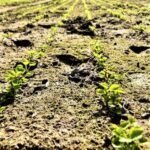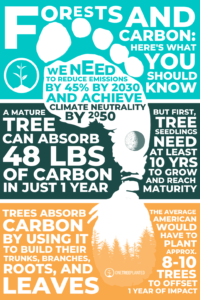Five things to know about the PMC for May 6, 2021
1. Sales

The PMC is in the last few days of the 2020-21 sales season. We will soon be able to get a final accounting of sales, but it should exceed the amount budgeted for this fiscal year and perhaps last years’ record-setting revenue.
It also means that if anyone still wants plants this season, they should contact us ASAP. It would be nice if the season could continue but bare-root plants deteriorate under prolonged storage and the warmer drier weather does not help either.
The PMC is taking orders for next season so if there is anything anyone wants for next year they can order early and secure the plant materials they need.
2. Sales manager
The Sales Manager position has been open for almost a month and the resumes and cover letters received will be reviewed, potential candidates contacted, and initial remote interviews arranged. Following that, a round of in-person interviews will be conducted with the most qualified candidates.
3. Second weeding
The second round of weeding is nearing completion. That puts the PMC ahead of schedule on weed management for the year so far with the ground cleaner than ever before. Back when weed pressures seemed insurmountable the thought of successfully maintaining a weeding schedule seemed like an unobtainable dream. Complacency is not an option however since the June and July weedings are still to come and they are far heavier. The one potential problem with being on top of weed control is that it results in fewer hours for the crew which could send some of them looking for more regular work.

4. The state of forest and conservation nurseries
The Pew Charitable Trust recently published an article on its website that examines the state of forest and conservation seedling production. It can be found at https://www.pewtrusts.org/en/research-and-analysis/blogs/stateline/2021/04/05/states-are-growing-fewer-trees-forest-owners-say-thats-a-problem.
The article compares the growing demand for these plant materials due to fires with the decrease in the number of nurseries providing them. It also compares the large forest nurseries that produce large quantities of seedlings under contract with the decline of the state nurseries, many of which were speculatively providing smaller quantities for smaller landowners. The article does not mention one important source of conservation and forest seedlings, however, which are the nurseries run by non-profit organizations and that is where the WACD PMC comes in.
Looking back, all those who supported and worked to make the PMC happen deserve a big pat on the back. Without that vision, support, and direction the task of putting conservation on the ground could be even more challenging. Thanks to all who pitched in.
5. Life goes on
Trees are critical to all aspects of life—our health, our economy, and our environment. Just take a look at the following facts to see for yourself.

A healthy 100-foot-tall tree has about 200,000 leaves. A tree this size can take 11,000 gallons of water from the soil and release it into the air again as oxygen and water vapor in a single growing season.
(The infographic source is: https://onetreeplanted.org/blogs/stories/planting-trees-offsets-carbon.)
Native tree species support natural ecosystems by providing habitat and food for birds, mammals, and insects.
The planting of trees improves water quality. The complex root network of trees reduces runoff and erosion. This allows more recharging of the groundwater supply. Wooded areas help prevent the transport of sediment and chemicals into streams.
In addition to all these things, forested streamside buffers also filter sediment from streams, stabilize streambanks, shade and modify stream temperatures, sequester carbon to help mitigate greenhouse gas emissions, and reduce downstream flooding. And the presence of mature trees in a buffer makes the stream wider.
What else?
- POLLUTION REDUCTION
- A mature tree absorbs carbon dioxide at a rate of 48 pounds per year. In one year, an acre of forest can absorb twice the CO2 produced by the average car’s annual mileage.
- Studies show up to 88 percent of nitrate and 76 percent of phosphorus is reduced after agricultural runoff passes through a forested streamside buffer.
- URBAN BENEFITS
- A single street tree returns over $90,000 of direct benefits (not including aesthetic, social, and natural) in the lifetime of the tree, for a planting cost of only $250-600 (includes first three years of maintenance).
- ECONOMIC DEVELOPMENT
- In one study, 83 percent of realtors believe that mature trees have a “strong or moderate impact” on the salability of homes listed for under $150,000; on homes over $250,000, this perception increases to 98 percent.
- A number of studies have shown that real estate agents and home buyers assign between 10 and 23 percent of the value of a residence to the trees on the property.
- Trees can be a stimulus to economic development, attracting new business and tourism. Commercial retail areas are more attractive to shoppers, apartments rent more quickly, tenants stay longer, and space in a wooded setting is more valuable to sell or rent.
- HEALTH
- Surgery patients who could see a grove of deciduous trees recuperated faster and required less pain-killing medicine than matched patients who viewed only brick walls.
- Trees filter airborne pollutants and can reduce the conditions that cause asthma. Asthma incidents increase in urban communities where trees are eliminated in favor of new roads, homes, or commercial developments.
- ENERGY
- Trees properly placed around buildings can reduce air conditioning needs by 30 percent and can save 20-50 percent in energy used for heating.
- The net cooling effect of a young, healthy tree is equivalent to 10 room-size air conditioners operating 20 hours a day.
- Trees reduce annual heating and cooling costs for a typical residence by 8 to 12 percent and increase property values by 10 to 15 percent.
- FLOODING
- Forests filter and regulate the flow of water, in large part due to their leafy canopy that intercepts rainfall.
- Average interception of rainfall by a forest canopy ranges from 10 to 40 percent depending on species, time of year, and precipitation rates per storm event.
- A mature evergreen can intercept more than 4,000 gallons of rainwater per year.
- In urban and suburban settings, a single deciduous tree can intercept from 500 to 760 gallons of rainwater per year.
With all of this in mind, the Chinese saying that the best time to plant a tree is 20 years ago and the next best time is now seems more relevant than ever.
I hope this helps. Please let me know if you have any questions.
Jim Brown, WACD PMC Nursery Manager
